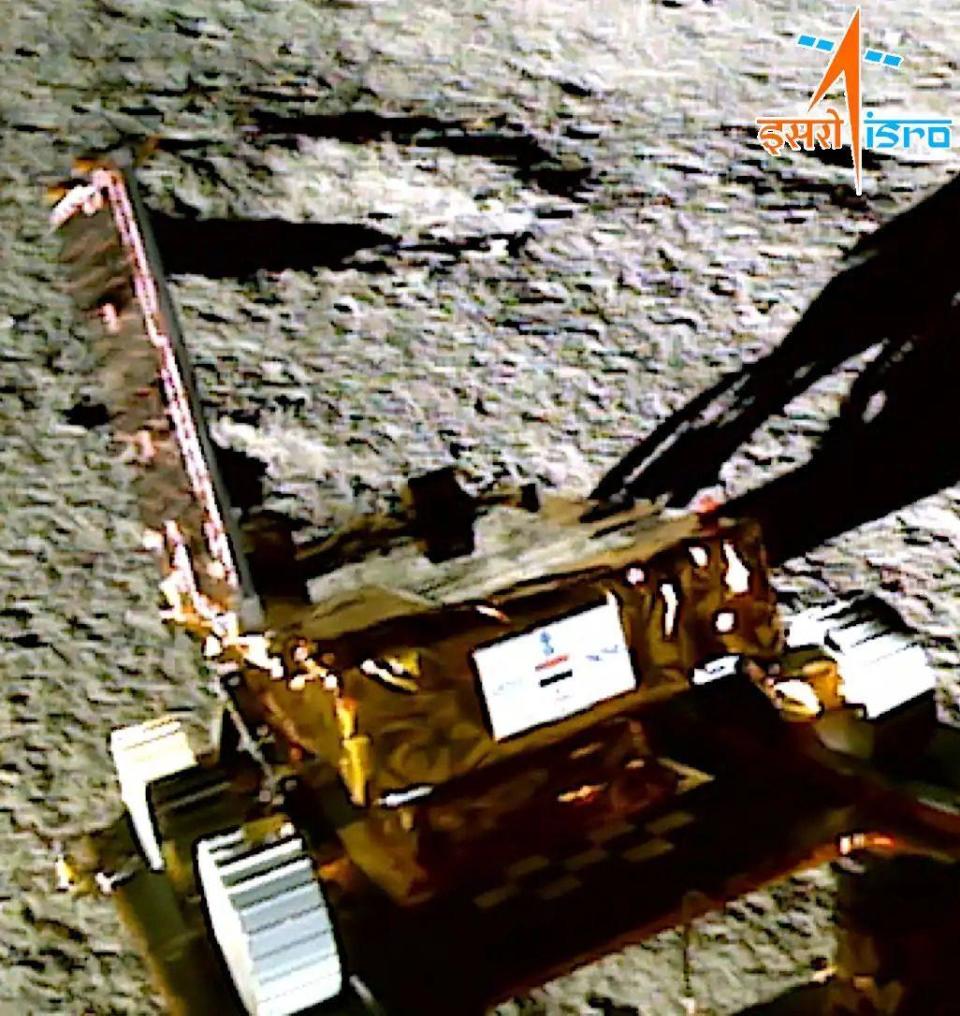According to scientists, the moon’s south pole was once covered in an ocean of liquid molten rock.
The findings support the theory that the moon’s surface was formed by magma about 4.5 billion years ago.
Remnants of the ocean were found by India’s historic Chandrayaan-3 mission, which landed at the South Pole last August.
The mission explored this remote and mysterious area, where no spacecraft had ever landed before.
The findings support an idea known as the Lunar Magma Ocean theory about how the Moon formed.
Scientists believe that when the moon formed 4.5 billion years ago, it began to cool and a lighter mineral called ferroanorthosite drifted to the surface. This ferroanorthosite — or molten rock — formed the moon’s surface.
The team behind the new findings found evidence for ferroane anorthosite at the South Pole.
“The theory of early lunar evolution becomes much more robust in light of our observations,” said Dr. Santosh Vadawale of the Physical Research Laboratory, a co-author of the paper published Wednesday in Nature.
Before India’s mission, the main evidence for magma oceans was found in the Moon’s mid-latitudes as part of the Apollo program.

Prof Vandawale and his team were at mission control during Chandrayaan-3.
“It was a really exciting time. Sitting in the control room, moving the rover across the lunar surface – that was a once-in-a-lifetime experience,” said Prof Vadawale.
When India’s Vikram lander made a famous soft landing at the South Pole last August, a rover named Pragyaan left the spacecraft.
Pragyaan roamed the lunar surface for 10 days, while Prof. Vadawale and his colleagues worked day and night to command the telescope to collect data at 70 degrees south latitude.
The robot was built to withstand temperature fluctuations between 70°C and -10°C and could decide for itself how to navigate the uneven and dusty lunar surface.
It took 23 measurements with an instrument called an alpha particle X-ray spectrometer, which essentially excites atoms and analyzes the energy produced to identify minerals in the lunar soil.
The team of scientists also found evidence of a massive meteorite impact in the region four billion years ago.
The crash is thought to have created the South Pole-Aitken Basin, one of the largest craters in the solar system at 2,500 km in diameter.
It is located about 350 km from the site explored by India’s Praygam rover.
But the scientists discovered magnesium, which they believe came from the depths of the moon, flung up by the impact and hurled across the surface.
“This is believed to have been caused by a large asteroid impact, which ejected material from this large basin. In the process, a deeper part of the moon was also excavated,” said Professor Anil Bhardwaj, Director of India’s Physical Research Laboratory.
The findings are just some of the scientific data collected during the Chandrayaan-3 mission, which ultimately hopes to discover icy water at the South Pole.
The discovery would revolutionize space agencies’ dream of building a human base on the moon.
India plans to launch another mission to the moon in 2025 or 2026. The country hopes to collect samples from the lunar surface and bring them back to Earth for analysis.



